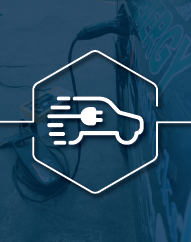New Smart Charger May Pave the Way for More EVs
The revolutionary system allows for cheaper, carbon-free charging and aims to reduce the burden on the electric grid as more EVs enter the roadway.
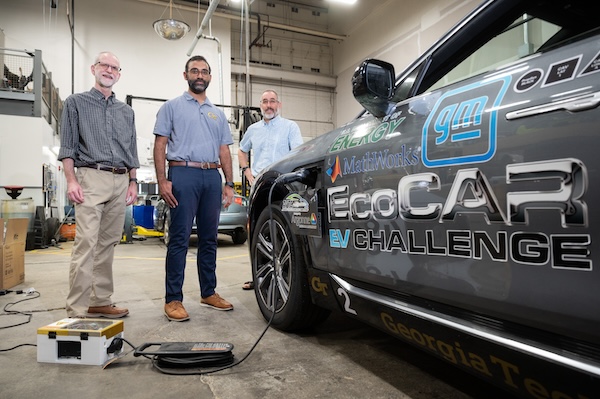
David Taylor, professor in the School of Electrical and Computer Engineering (ECE); Kartik Sastry, a recent ECE Ph.D. graduate; and Michael Leamy, Woodruff Professor and director of Graduate Studies in the School of Mechanical Engineering.
In 2024, more than one in five cars sold is an electric vehicle (EV). Intergovernmental agencies estimate that by 2035, half of all new cars sold globally will be EVs.
While more EVs on the road sounds like great news for the environment, it could lead to complications. The electric grid is not yet ready to support the EV influx, and unaddressed capacity limitations could threaten the future of the EV industry.
Researchers at the Georgia Institute of Technology have developed a device to help avoid grid overload: a revolutionary EV smart-charging system.
Their optimization-based approach would not only help reduce grid stress but also enable users to customize the charging process and minimize cost, prioritize the use of carbon-free energy, or adjust the charging speed. The technology might even help promote the EV industry.
“The EV revolution is happening so quickly that electrical utilities will find it difficult and costly to update the grid fast enough to accommodate these vehicles,” said Michael J. Leamy, Woodruff Professor and director of Graduate Studies in the George W. Woodruff School of Mechanical Engineering. “We wanted to investigate a way of smart charging that considers EVs as they converge on the electric grid, which we already know is near its maximum capacity. We need to buy time for the grid operators so they aren’t overwhelmed when more EVs enter the market.”

Taking a Load Off (the Grid)
In the southeastern U.S., during the summertime, power use peaks from late afternoon to early evening. By then, the heat of the sun has warmed up homes and buildings, and people have cranked up their air conditioners. This is also when most people come home from work and plug in their EVs, which immediately start charging. When plugged in, an EV can easily be the most significant consumer of power in a home.
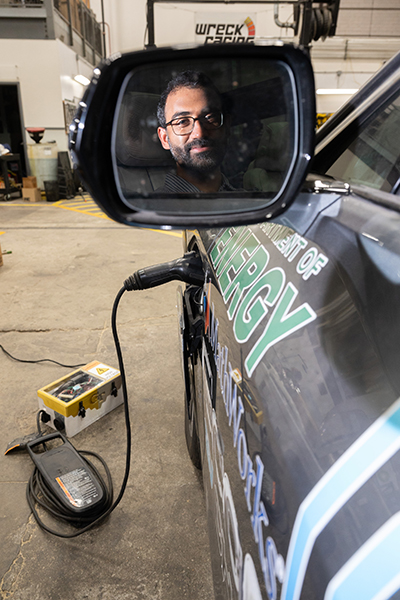
The smart charger minimizes stress on the electric grid by using algorithms to distribute charging over time.
“A bunch of EVs charging during the peak power load can be problematic for utilities, exacerbating electricity demand and overloading the grid,” said Kartik Sastry, a recent Ph.D. graduate in the School of Electrical and Computer Engineering (ECE) and co-inventor of the technology. “But you don’t need to start charging as soon as you come home. In most cases, there’s ample time overnight to fully charge electric vehicles.”
The team set out to address the issue of grid overload by taking advantage of overnight surplus charging time. They developed cutting-edge optimization algorithms to distribute charging over time, thereby minimizing grid stresses while offering benefits to consumers.
Rather than charging at full speed as soon as an EV is plugged in, the team’s smart-charging algorithms allow for gradual charging, or charging at several intervals over time rather than all at once. The algorithms also decrease the maximum power draw of a home during charging, achieving what the researchers call “peak shaving.”
The algorithm itself plans the charging and when it will occur, based on the state of the grid and consumer preferences. The system also makes these decisions without the need for any centralized control, and without communicating with other vehicles in the neighborhood or city.
“By using random timing and predictions of household power usage, our algorithm can effectively distribute the load,” said David G. Taylor, ECE professor and co-inventor of the charging system. “This means that the number of EVs in a community can increase without the local utility incurring huge expenses for infrastructure upgrades, provided these EVs use the smart charging algorithm we've developed.”

Customizable Charging
The system allows consumers to customize their charging. Using an app the team designed, a consumer can control four different facets of charging: cost, carbon-free energy, speed, and battery health. The app’s slider widgets allow a user to weigh their preferences for each; based on the user’s selections, the algorithm determines how best to charge the vehicle while minimizing grid impact.
For example, to charge their vehicle quickly, a user would move the charging-speed slider all the way to the right. Prioritizing carbon-free charging, on the other hand, programs the charger to only charge the car when renewable resources such as wind or solar are available on the grid. Choosing to charge at the lowest cost would prompt the system to charge at low-demand times based on a utility’s price schedule, allowing the user to avoid any demand charges.

Driving Forward
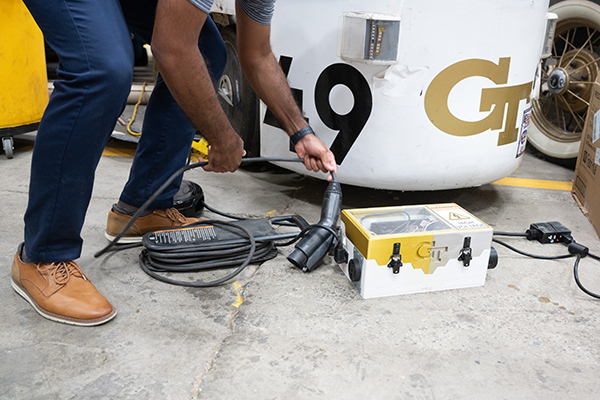
The team plans to demonstrate how their smart-charging algorithms can reduce costs for entire fleets of electric vehicles.
The team has published several research articles about the project in major journals. They have also built prototype hardware, completed charging case studies with individual EVs, and submitted a patent for the technology.
Expanding beyond the system’s applications for individual consumers, the team has also developed this technology to function in commercial settings. They hope to collaborate with an EV charging station company and a public school system that uses EV buses to demonstrate how their algorithms automatically reduce fleet charging costs.
The goal, Leamy says, is for companies to license their smart-charging algorithm technology.
The researchers are also reaching out to auto companies to have their technology incorporated into EVs themselves, which would allow users to set their charging preferences right from their dashboard.
“We hope to demonstrate that smart charging is feasible on a large scale — and also measure the benefits of doing so,” Leamy said. “We plan to show how much money consumers, companies, and school systems can save with smart charging rather than simply charging in an ad hoc fashion.”
“We anticipate a significant uptick in EV adoption, which will lead to higher demand on the grid,” Sastry said. “To protect the grid and help the EV industry thrive, we must accommodate these EVs in a smart way, and that’s what we hope to achieve.”
This project was catalyzed by a 2020 seed funding award from the Strategic Energy Institute and the Energy Policy and Innovation Center through their vehicle-grid convergence research studies grant.
Writer and Media Contact: Catherine Barzler | catherine.barzler@gatech.edu
Photos: Allison Carter
Design: Josie Giles
Series Design: Stephanie Stephens
Copyediting: Stacy Braukman
About Georgia Tech Commercialization
Georgia Tech Commercialization provides a foundation for faculty seeking to translate the Institute's leading-edge research into real-world applications. Commercialization encompasses four pivotal units: CREATE-X, VentureLab, Quadrant-i, and Technology Licensing. These units empower students and faculty to launch startups, provide comprehensive commercialization support, manage intellectual property, and facilitate the transformation of research into viable businesses. The Office of Commercialization’s mission is to provide world-class commercialization services, catalyzing research and innovation to improve the human condition, and enhancing Georgia Tech's position as a leader in technology and entrepreneurial impact.
Paradigm Shifters Series
New Smart Charger May Pave the Way for More EVs
The revolutionary system allows for cheaper, carbon-free charging and aims to reduce the burden on the electric grid as more EVs enter the roadway.
World’s Smallest Robotic Guidewire Improves Surgical Precision
The robot is a groundbreaking surgical device that helps doctors navigate blood vessels with precision during procedures like angioplasty.
Researchers Create a Low-Emission, Fuel-Flexible Combustion System
This new combustor uses carbon-free fuels that will power planes and heat buildings.
New Wearable Device Monitors Joint Pain
Arthroba enables everyday people and their doctors to follow their joint health in real time.
New Implant May Help Patients Regenerate Their Own Heart Valves
Georgia Tech researchers have developed a groundbreaking 3D-printed, bioresorbable heart valve that promotes tissue regeneration.
Researchers Build Stable Solar Panel Without Silicon
Solar power as an electricity source is growing in the U.S., but scientists are still trying to make the solar panel production process more efficient.
Startup Targets Building Energy Inefficiencies With AI and Drones
Lamarr.AI uses drones, AI, and thermal imaging to identify energy inefficiencies in buildings, offering a faster, safer, and more accurate solution.
This Pacifier Could Monitor Babies’ Vitals in the NICU
The baby-friendly device measures electrolyte levels in real time, eliminating the need for repeated, painful blood draws.
This Small Sensor Could Make Huge Impacts on Brain Injury Treatment
Researchers develop a tinier sensor for less invasive intracranial monitoring.

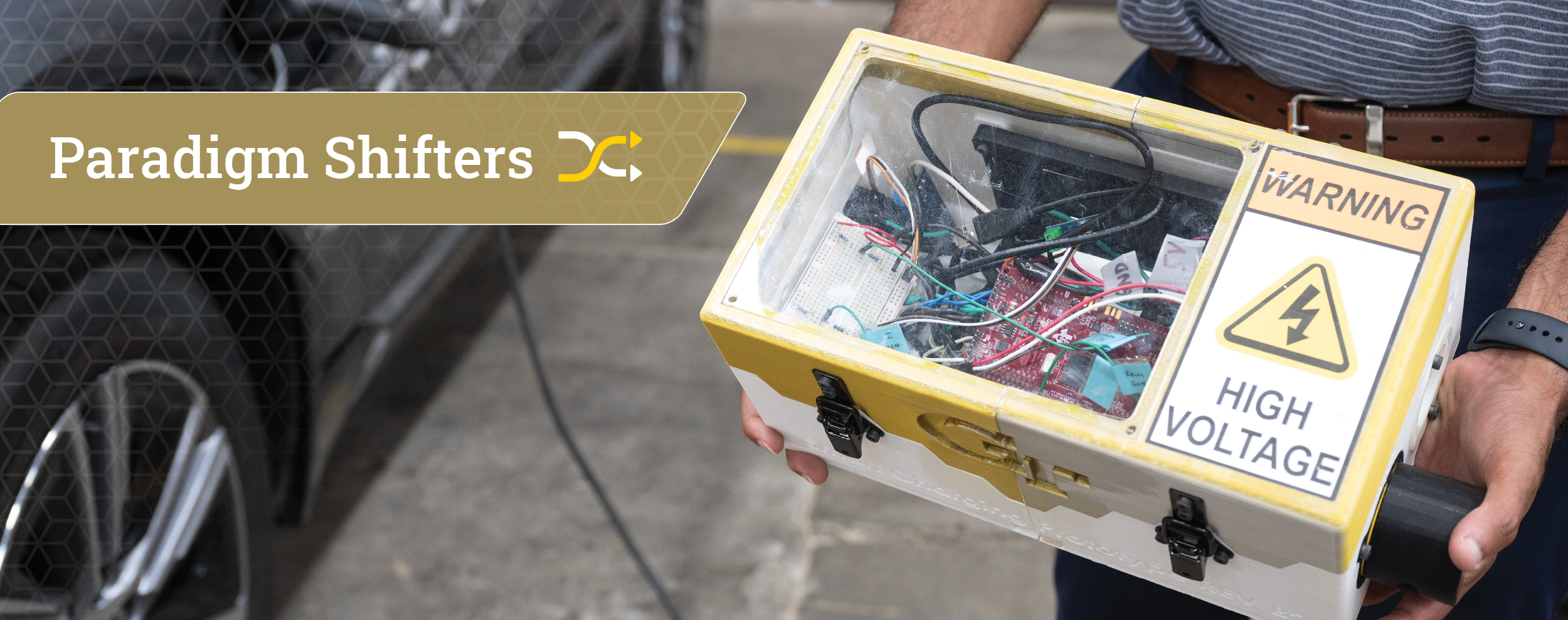
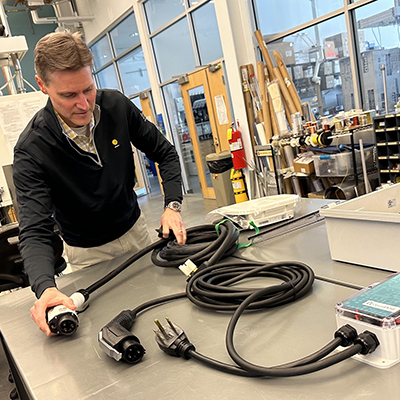
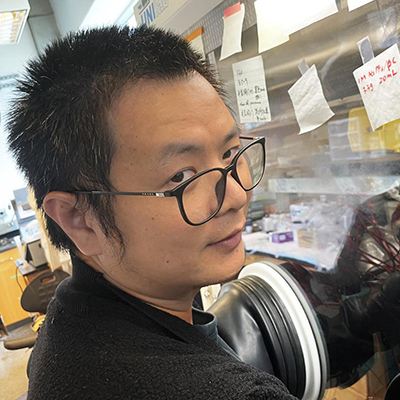 New Battery Cathode Material Could Revolutionize EV Market and Energy Storage
New Battery Cathode Material Could Revolutionize EV Market and Energy Storage  Georgia Tech Police Department Energizes Patrol Fleet With Electric SUVs
Georgia Tech Police Department Energizes Patrol Fleet With Electric SUVs 